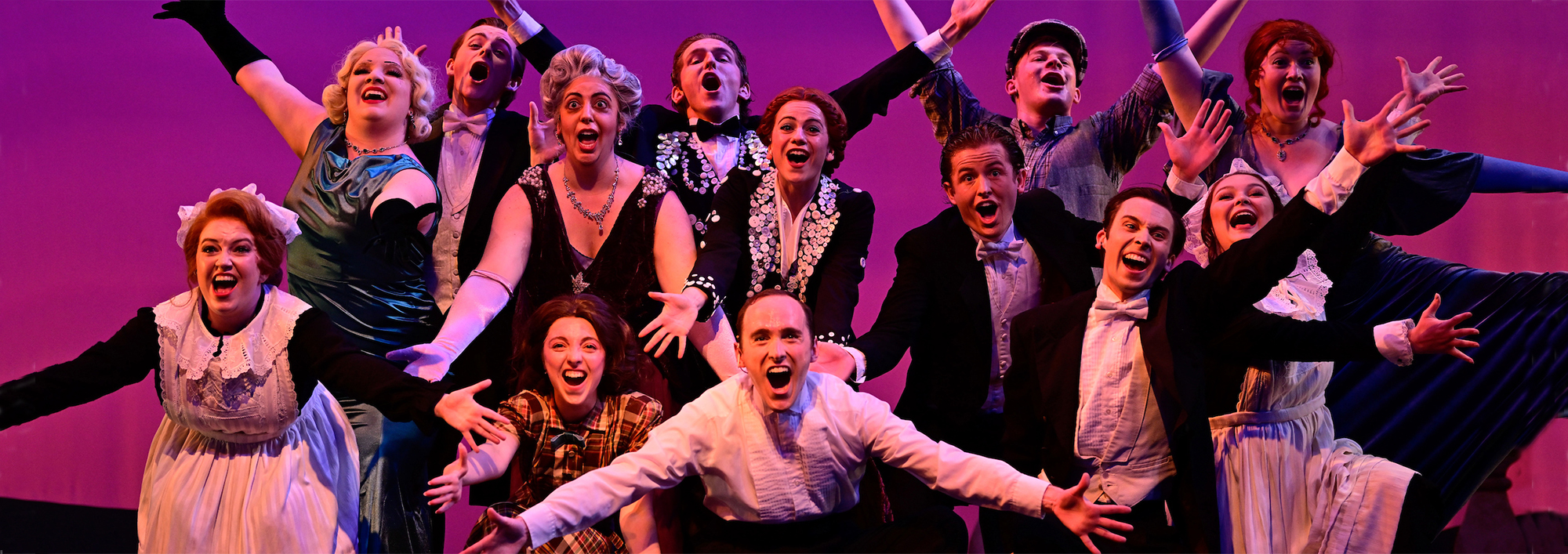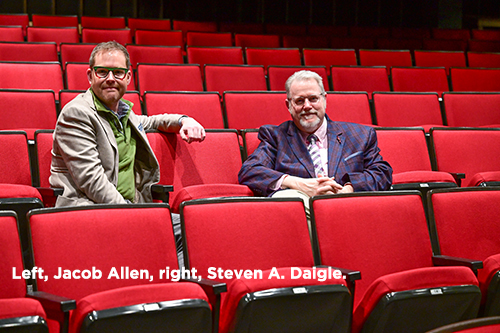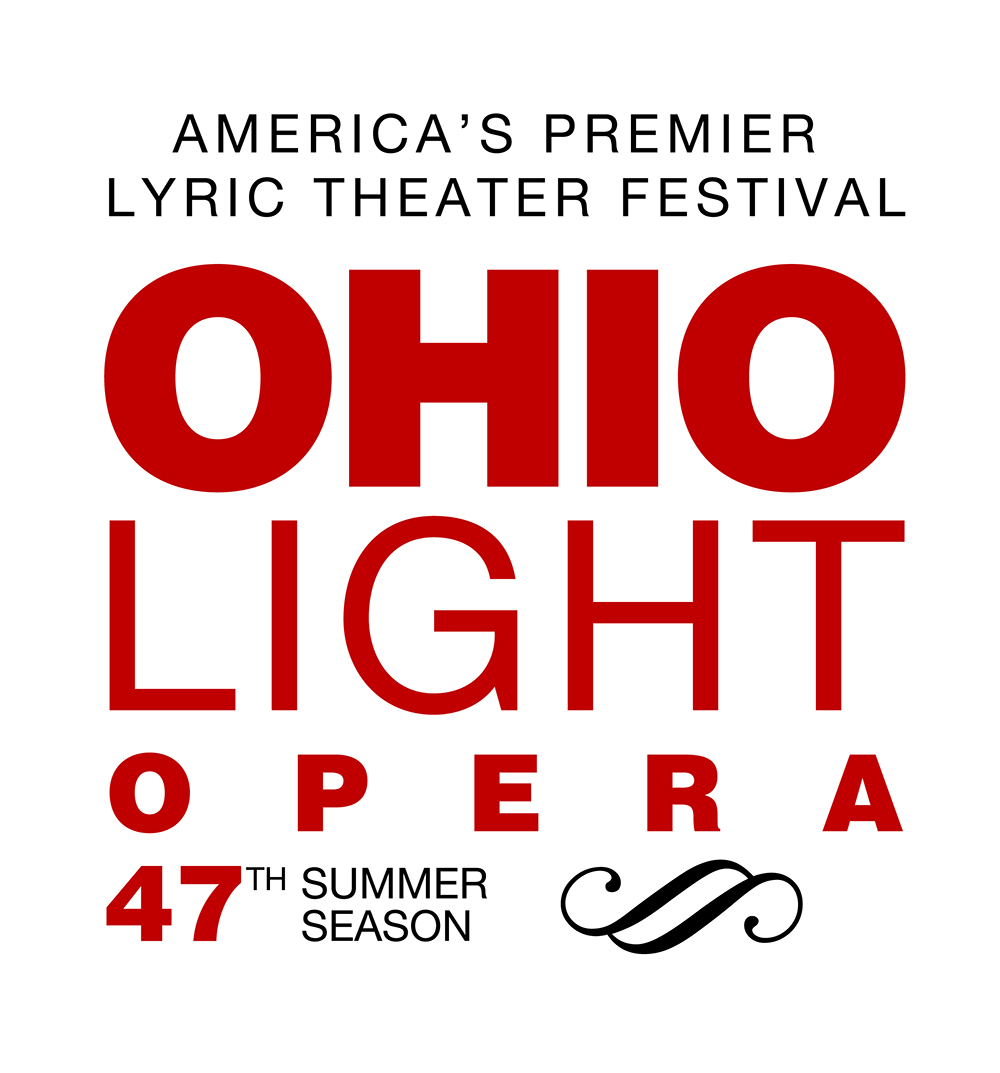

On May 9 of this year, Ohio Light Opera artistic director Steven Daigle announced that he will be stepping down from his leadership position at the end of the 2026 summer season. He, and OLO, are grateful that associate artistic director Jacob Allen will then assume his stewardship role. Steve’s contributions to OLO’s mission and to ensuring the survival of our national and international lyric theater legacy are nothing short of remarkable. OLO executive director Laura Neill and board chair Michael Miller reflect on Steve’s tenure at OLO.
The meaningful preservation of our culture’s lyric theater heritage—whether operetta or classic musical theater—requires both a fount of stellar material (of which there is no shortage) AND a commitment to represent it on stage with innovation, imagination, and inspiration, but always with full respect for the creators’ original concepts—whether musical or dramatic. Ohio Light Opera artistic director Steven Daigle, for 36 seasons and more than a quarter century in his current leadership role, has fulfilled these requisites and, in so doing, elevated OLO to its current position as the nation’s premier purveyor of the works that enchanted past—and now current—generations. The numbers themselves are impressive: Steve has directed for OLO 111 productions, introduced into the repertoire 86 titles by 29 composers, and overseen the artistry and design for 175 productions and 1300 performances.
But these statistics only begin to tell the full story. Steve has championed the works of Hungarian-born composer Emmerich Kálmán—to the tune now of 14 titles, more than those offered by any operetta company in the world, past or present. For eight of these presentations, Steve provided first-ever faithful English translations of the German-language originals. His love for Victor Herbert has brought six new titles to the Freedlander stage, including the first fully-staged, fully-orchestrated performances in more than a century of the zany Dream City and The Magic Knight and The Lady of the Slipper. In addition to directing revivals of Franz Lehár’s The Merry Widow, The Count of Luxembourg, and The Land of Smiles, Steve has treated OLO audiences to the composer’s rarely done The Czarevitch, Friederike, Cloclo, and The Mock Marriage. America had all but totally ignored the beloved Welsh composer Ivor Novello—until Steve introduced us to The Dancing Years and (in its American premiere) Perchance to Dream.
In 2000, with Lerner and Loewe’s Camelot, Steve took the bold step of introducing mid-20th-century musicals to the OLO show roster. His objectives were multifold: to increase the company’s patron base, to promote “cross-fertilization” between the company’s operetta and new musical theater devotees, and to remedy what was evidently, across the country, a decreasing interest in staging “golden age” Broadway musicals. Since that initial foray, Steve has programmed 25 of the longest-running Broadway musicals from the 1940s onward—from Oklahoma! to Silk Stockings to Man of La Mancha to Into the Woods. These have all done exceptionally well at the box office and thus provided the necessary financial cover for OLO’s rarer titles.
No less significant in furthering the company’s mission was Steve’s choice for celebrating, in 2008, Ohio Light Opera’s 100th show title. With his production of the American full-stage premiere of Jerome Kern’s 1922 The Cabaret Girl, OLO opened its doors to the staggeringly rich musical theater gems of the 1920s and 1930s. In the intervening years, the Freedlander stage has welcomed six titles of both George Gershwin and Cole Porter, four of Jerome Kern, two each of Irving Berlin and Rodgers and Hart, to say nothing of the toe-tapping marvels of Vincent Youmans’ No, No, Nanette and Noel Gay’s Me and My Girl. For the vast majority of these works, OLO remains—over the past many decades—the only company to offer these titles in full stagings with original orchestrations. Steve’s contributions to rejuvenating these show gems have not gone unnoticed by scholars and the musical theater community, who have increasing presence at OLO’s summer festival.
The all-too-common perception that Ohio Light Opera magically appears every June and then, in August, goes into hibernation for ten months is readily dismissed by a simple look at Steve’s off-season schedule. To eventually settle on six or seven titles for the following summer, he typically begins with as many as 15 candidates. He must assess the availability of materials, the artistic and technical demands of each show, their box office potential, and how they mesh in fulfilling OLO’s mission. Trips to the Library of Congress—and, recently, the University of Texas—generally entail two or three days of copying thousands of pages of orchestrations, vocal scores, scripts, and promotional material. The preparation of the season calendar demands attention to past—and evolving—ticket sale trends, rehearsal requirements, the choice between evening and matinee performances, and the grouping of shows to maximize opportunities for out-of-town patrons. In late fall, Steve begins conferencing with the conductors, stage directors, choreographers, and costume, set, sound, and lighting designers. His commitment to honoring and preserving the original spirit of each show requires a significant amount of research, especially for the many OLO titles that have period settings. For selected shows, he has been known to provide the artistic staff with dozens of pages of photographs and historical documentation—all with the goal of focusing the company on that very spirit that he is trying to preserve and convey on stage.
Steve’s initial work at OLO, beginning in 1990, was as a stage manager—responsible for overseeing onstage and backstage activities, facilitating communications between the stage director and the artists and crew, and calling cues during performances. That he typically served in this role for every OLO performance over many years provided him with an exceptional sense of the inner workings of lyric theater and positioned him ideally to assume, within just a few years, increasing responsibilities as a stage director and, eventually, artistic director. His early directorial efforts—including The Gypsy Princess (1993), Countess Maritza (1994), Robinson Crusoe (1996), and Patience (1997)—remain among OLO’s most revered stage representations. Through the intervening years, in more than 100 additional OLO directing assignments, Steve has only added to this reputation and solidified his position as a highly studied and insightful interpreter of the composer and librettist’s artistic visions, but always with his own sparks of stage originality and creativity. His mastery of organization—from the first day of rehearsals in May to the last performance in August—is legendary among the thousands of OLO vocalists, musicians, and technical staff who have called OLO their summer home.
When Steve took over in 1999 as OLO artistic director, he also assumed coordination and oversight of the company’s nascent recording series, which now numbers 43 CDs and nine DVDs. These releases have appeared in worldwide record shops and earned critical praise in numerous music periodicals. All the DVDs and many of the CDs represent world-premiere complete recordings. For all their myriad LP and CD releases over the years, many of the Gilbert and Sullivan shows were enjoying in these OLO discs their first offerings with complete dialogue.
Concurrent with his leadership activities at OLO—and garnering ever-positive reviews from performers and the public—Steve served for 28 years as professor of opera at the Eastman School of Music and as artistic director of Eastman Opera Theatre. He directed, or oversaw the production of, 85 complete operas, ranging from late 18th century to the cutting-edge works of recent decades, whose composers—including Carlisle Floyd, Ricky Ian Gordon, Missy Mazzoli, Jake Heggie, Lori Laitman, and Charles Strouse—collaborated with Steve and EOT in bringing their works to life on stage.
As he has since the late 1990s, Steve will be guiding Ohio Light Opera through this and the next summer season. His steadfast commitment to serve lyric theater, and to instill in the company the will to do likewise, has provided a solid foundation for OLO’s future in serving the art and its patrons.





